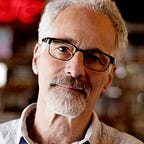The overdose epidemic is NOT an “opioid crisis” — and doctors aren’t at fault
The news media are awash with hysteria about the opioid crisis (or opioid epidemic). But what exactly are we talking about? If you Google “opioid crisis”, nine times out of 10 the first paragraph of whatever you’re reading will report on death rates. That’s right, the overdose crisis.
For example, the lead article on the “opioid crisis” on the US National Institutes of Health website begins with this sentence: “Every day, more than 90 Americans die after overdosing on opioids.”
Is the opioid crisis the same as the overdose crisis? No. One has to do with addiction rates, the other with death rates. And addiction rates aren’t rising much, if at all. For some populations they are actually going down.
Let’s look a bit deeper.
The overdose crisis is unmistakable. I reported on some of the statistics and causes in The Guardian last July. I think the most striking fact is that drug overdose is the leading cause of death for Americans under 50. Some people swallow, or (more often) inject, more opioids than their body can handle, which causes the breathing reflex to shut down. But drug overdoses that include opioids (about 63%) are most often caused by a combination of drugs (or drugs and alcohol) and most often include illegal drugs (e.g. heroin). When pharmaceuticals are involved, methadone and Oxycontin are at the top of the list. These drugs are notoriously acquired and consumed illegally, yet they tend to be categorized as “prescription drugs” in today’s inflamed reporting.
Given these facts, I wonder why the most bellicose response to the overdose crisis is that we must stop doctors from prescribing opioids.
Yes, there has been an upsurge in the prescription of opioids in the US over the past 20 to 30 years (though prescription rates are currently decreasing). This was a response to an underprescription crisis. Severe and chronic pain were grossly undertreated for most of the 20th century. Even patients dying of cancer were left to writhe in pain until prescription policies began to ease in the 70s and 80s. The cause? An opioid scare campaign not much different from what’s happening today.
Certainly some doctors have been prescribing opioids too generously, and a few are motivated solely by profit. But that’s a tiny slice of the big picture. A close relative of mine is a family doctor in California. He and his colleagues are generally scared (and angry) that they can be censured by licensing bodies for prescribing opioids to people who need them. And with all the fuss in the press right now, the pockets of overprescription are rapidly shrinking.
But the news media rarely bother to distinguish between the legitimate prescription of opioids for pain and the diverting (or stealing) of pain pills for illicit use. The statistics most often reported are a hodge-podge. Take the first sentence of an article on the CNN site posted on 29th October: “Experts say the United States is in the throes of an opioid epidemic, as more than two million of Americans have become dependent on or abused prescription pain pills and street drugs.”
First, why not clarify that most of the abuse of prescription pain pills is not by those for whom they’re prescribed? Among those for whom they are prescribed, the onset of addiction (which is usually temporary) is about 10% for those with a previous drug-use history, and less than 1% for those with no such history. Note also the oft-repeated maxim that most heroin users start off on prescription opioids. That does not mean that most prescription opioid patients become heroin users. Obviously.
Second, wouldn’t it be sensible for the media to distinguish street drugs such as heroin from pain pills? We’re talking about radically different groups of users.
Third, virtually all experts agree that fentanyl and related drugs are driving the overdose epidemic. These are many times stronger than heroin and far cheaper, so drug dealers often use them to lace or replace heroin. Yet, because fentanyl is also a manufactured pharmaceutical prescribed for severe pain, the media often lump it in with prescription painkillers — even if it comes from an underground lab in China.
It’s remarkably irresponsible to ignore these distinctions and then use “sum total” statistics to scare doctors, policymakers and review boards into severely limiting the prescription of pain pills.
By the way, if you were either addicted to opioids or needed them badly for pain relief, what would you do if your prescription was abruptly terminated? Heroin is now easier to acquire than ever, partly because it’s available on the darknet and partly because present-day distribution networks function like independent cells rather than monolithic gangs — much harder to bust. And, of course, increased demand leads to increased supply. Addiction and pain are both serious sources of suffering. If you were afflicted with either and couldn’t get help from your doctor, you’d try your best to get relief elsewhere. And your odds of overdosing would increase astronomically.
It’s doctors — not politicians, journalists, or professional review bodies — who are best equipped and motivated to decide what their patients need, at what doses, for what periods of time. And the vast majority of doctors are conscientious, responsible and ethical.
Addiction is not caused by drug availability. The abundant availability of alcohol doesn’t turn us all into alcoholics. No, addiction is caused by psychological (and economic) suffering, especially in childhood and adolescence (e.g. abuse, neglect, and other traumatic experiences), as revealed by massive correlations between adverse childhood experiences and later substance use. The US is at or near the bottom of the developed world in its record on child welfare and child poverty. No wonder there’s an addiction problem — and an overdose crisis — in the US. And how easy it is to blame doctors for either or both.
Originally published in The Guardian, 7 November 2017
